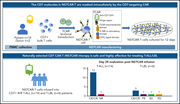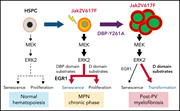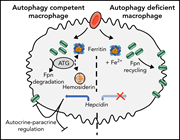Issue Archive
Table of Contents
BLOOD COMMENTARIES
BLOOD SPOTLIGHT
The antibody-drug conjugate loncastuximab tesirine for the treatment of diffuse large B-cell lymphoma
Clinical Trials & Observations
In this Blood Spotlight, Calabretta and colleagues describe the mechanism of action of loncastuximab tesirine, an anti-CD19 antibody-drug conjugate. They discuss data from the first phase 1 and 2 trials of the drug in patients with relapsed or refractory diffuse large B-cell lymphoma contributing to its recent approval by the US Food and Drug Administration.
REVIEW ARTICLE
Specification of hematopoietic stem cells in mammalian embryos: a rare or frequent event?
Ganuza et al provide a concise review on the origin of hematopoietic stem cells (HSCs) in mammals. They illustrate how the field is moving away from dependence on classic transplantation assays and utilizing new culture and lineage-tracing technologies to better understand and characterize HSC numbers and function from early points in development.
CLINICAL TRIALS AND OBSERVATIONS
Naturally selected CD7 CAR-T therapy without genetic manipulations for T-ALL/LBL: first-in-human phase 1 clinical trial
Clinical Trials & Observations
Development of chimeric antigen receptor (CAR) T-cell therapies for T-cell malignancies has been compromised by the problem of T-cell fratricide. Lu et al describe a novel approach, generated through natural selection of fratricide-resistant CD7 CAR T cells. In preliminary phase 1 trial data from 20 patients with relapsed/refractory T-acute lymphoblastic leukemia or lymphoma, the authors report that infusions are well-tolerated, with the majority of patients achieving minimal residual disease-negative complete remisssion.
IMMUNOBIOLOGY AND IMMUNOTHERAPY
Combining nilotinib and PD-L1 blockade reverses CD4+ T-cell dysfunction and prevents relapse in acute B-cell leukemia
Despite improvements in outcomes for patients with Philadelphia chromosome positive (Ph+) B-cell acute lymphoblastic leukemia (Ph+ B-ALL) with the addition of tyrosine kinase inhibitors to chemotherapy, secondary resistance is common. Using a nonirradiated immunocompetent murine model and primary patient samples, Tracy and colleagues describe the functional defects in exhausted CD4+ T cells associated with the loss of anti-leukemic effects, and they demonstrate that anti-PD-L1 blockade improves the efficacy of nilotinib in a CD4+ T-cell–dependent manner by reducing exhaustion. These data encourage clinical testing of regimens incorporating these 2 targeted therapies.
LYMPHOID NEOPLASIA
GLA/DRST real-world outcome analysis of CAR T-cell therapies for large B-cell lymphoma in Germany
Clinical Trials & Observations
CD19-directed chimeric antigen receptor (CAR) T cells are becoming part of the standard of care for relapsed/refractory large B-cell lymphoma. Bethge and colleagues report the real-world experience of 356 patients receiving CAR T cells to explore risk factors influencing outcomes. They detail outcomes similar to those in reported trials and identify failure of bridging therapy, elevated lactate dehydrogenase, CAR T product selection, and absence of prolonged neutropenia and/or severe neurotoxicity as significant influences on progression-free survival.
MYELOID NEOPLASIA
The ERK2-DBP domain opposes pathogenesis of a mouse JAK2V617F-driven myeloproliferative neoplasm
Abnormal growth factor signaling is a feature of myeloproliferative neoplasms (MPNs). Focusing on mitogen-activated protein kinase-1, also known as ERK2, Zhang and colleagues reveal that its 2 substrate binding domains have opposing roles in mouse models of JAK2V617F-driven MPNs. The ERK2-D domain may be a promising therapeutic target while conversely, the other domain, ERK2-DBP, blocks progression of the disease. This changes the perception that inhibiting the catalytic activity of ERK in MPNs will be an effective therapeutic strategy.
RED CELLS, IRON, AND ERYTHROPOIESIS
VASCULAR BIOLOGY
Thrombolytic tPA-induced hemorrhagic transformation of ischemic stroke is mediated by PKCβ phosphorylation of occludin
Early intervention with recombinant tissue plasminogen activator (rtPA) improves outcomes in acute ischemic stroke, but benefits can be limited by hemorrhagic transformation. Goncalves et al used animal models to reveal a mechanism behind the hemorrhage and provide a proof-of-concept interventional approach that reduces this risk by targeting phosphorylation of occludin in the cerebrovascular endothelium after rtPA. Translation of this work into clinical trials may improve safety and expand the time window for rtTPA therapy.
LETTER TO BLOOD
Subclonal evolution of CLL driver mutations is associated with relapse in ibrutinib- and acalabrutinib-treated patients
Clinical Trials & Observations
BLOOD WORK
-
Cover Image
Cover Image
![issue cover]()
Double immunofluorescence staining of bone marrow–derived macrophages with ferroportin (red) and Atg5 (green) antibodies. Colocalization appears orange-yellow; the nucleus is stained with DAPI (4′,6-diamidino-2-phenylindole; blue). See the article by Taleb et al on page 374.
- PDF Icon Front MatterFront Matter
- PDF Icon Table of ContentsTable of Contents
- PDF Icon Back MatterBack Matter
- PDF Icon Editorial BoardEditorial Board
Advertisement intended for health care professionals
Email alerts
Advertisement intended for health care professionals










CD7 CAR: sword and shield
Clinical Trials & Observations